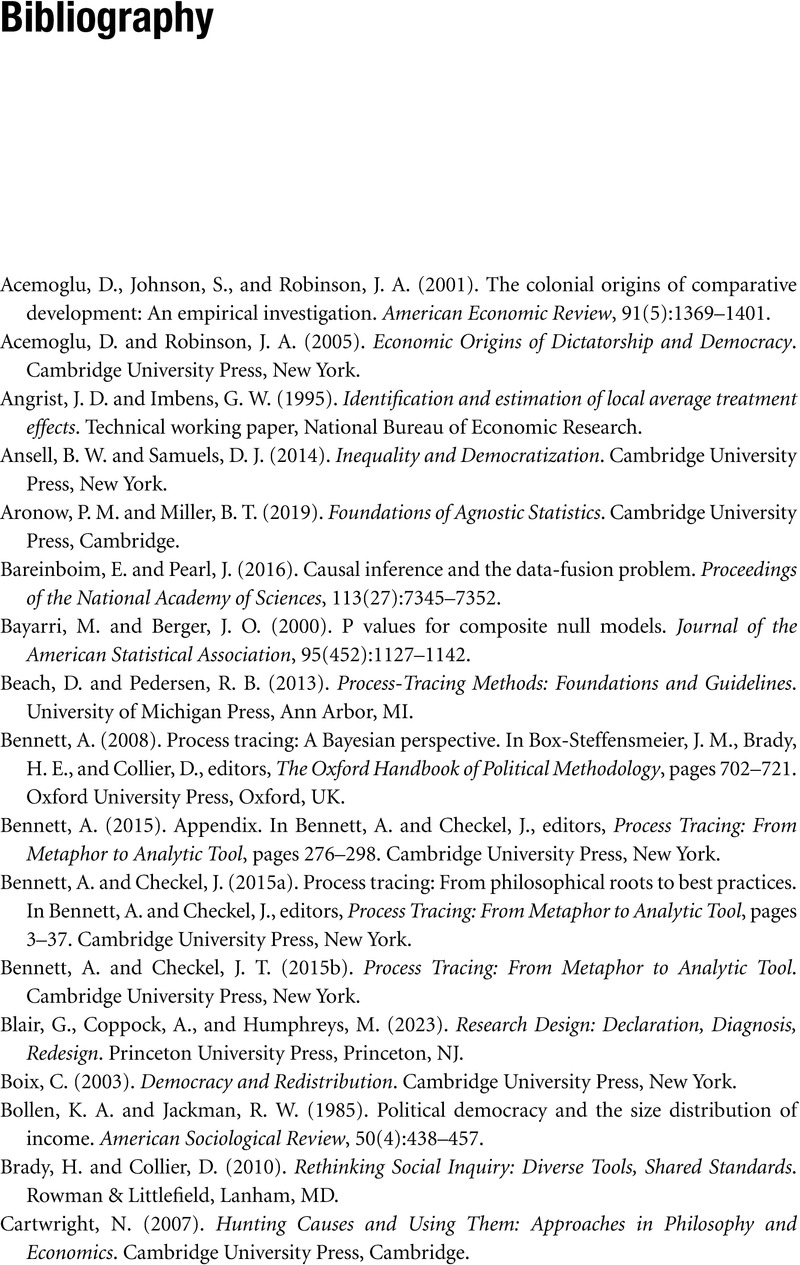Bibliography
Published online by Cambridge University Press: 13 October 2023
Summary

- Type
- Chapter
- Information
- Integrated InferencesCausal Models for Qualitative and Mixed-Method Research, pp. 413 - 419Publisher: Cambridge University PressPrint publication year: 2023



